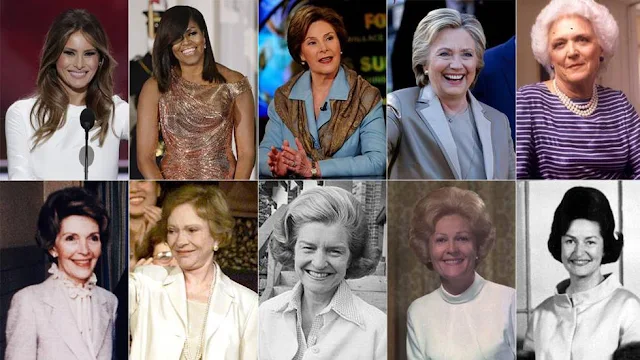The role of the first lady
The term First Lady designates the wife or spouse of the president of a republic or, failing that, who -mother, daughter or sister- fulfills her formal duties on trips and official ceremonies. Therefore, it is a purely formal position.
The first ladies are not voted or elected, but they assume an important and decisive protocol and institutional role in today's societies. From the institutional point of view, its activity is not regulated, but its importance is decisive in the image of the institution.
In the case of a man (when the woman is the president), whoever occupies the position, he usually receives the title of "First Knight".
Origin
The figure of the first lady has its precedents in Rome, where the case of Livia Drusila, wife of Emperor Augustus, stands out, who along with him was part of the first Roman couple, intervened in politics and was considered to be the one who most influenced the Emperor (Sánchez Hernández, 2011).
Her name is often attributed to Mary Clemmer Ames (1877), Victorian journalist for the Springfield, Massachusetts Republican, New York Press (1865) and the Brooklyn Daily Union (1869-1871) and author of Ten years in Washington. Life and Scenes as a woman sees them (1871), who when referring to Lucy Webb Hayes, wife of Rutherford B. Hayes, used the name “The First Lady of the Land”. However, apparently the expression had already been used by the press when referring to Mary Lincoln - Abraham Lincoln's wife and, above all, to Harriet Lane, James Buchanan's niece, who acted as first lady during the presidency of her uncle. . The latter, known as "the democratic queen", was a true model for the society of her time. A great hostess and very careful with protocol in times of regional political tension, she always took care to point out the appropriate precedents in the social events that she organized, exercising her functions with great tact.
Charles Nirdlinger, playwright, made the expression even more popular when he premiered his play The First Lady in the Land in 1911 about Dolley Dandridge Payen Todd Madison, wife of James Madison, president of the United States in 1809. Beginning in the 1930s , the name "First Lady" -First Lady- is consolidated and will be extended to almost all the republics of the world, although very especially to the Spanish-American ones.
In Spain
It is interesting to do a search in Google and see that First Lady brings us Ana Botella, Carmen Polo, Dolores Rivas Cherif, Carmen Romero and Sofía from Grecia. Couldn't Carmen Polo be? In other words, could one speak of the first lady in dictatorships? Strictly speaking, the only one that she was is Dolores Rivas, Manuel Azaña's wife.
Conclusion
The official handling of the figure of the first lady goes through the elaboration of a careful iconographic syntax, structured according to an institutional ideal. However, in Spain this figure does not exist.
As Mario Alejandro Carrillo assures, “the official handling of the figure of the first lady goes through the elaboration of a careful iconographic syntax, structured according to an institutional ideal” (1992: 232). What is undeniable is that the first lady becomes an institutional reference and that it is not only her person that is at stake but also the institution that she represents. Many know it and have managed to take advantage of that image and even personal income, using the position to approach certain lobbies and achieve political positioning to the point of having subsequently attended presidential elections and even having acceded to the presidencies of their respective countries .







